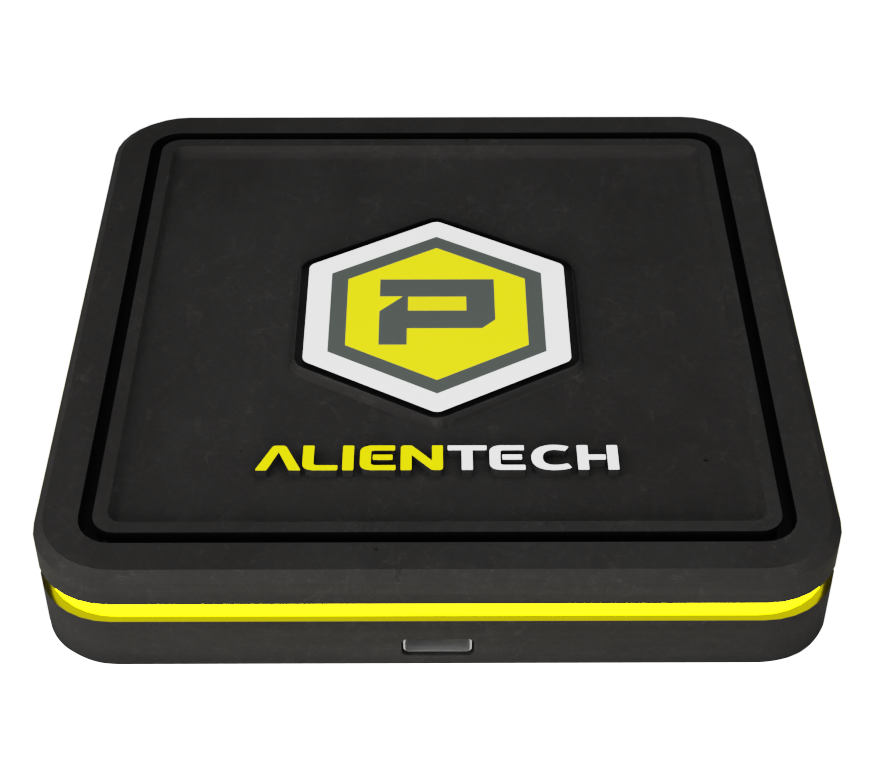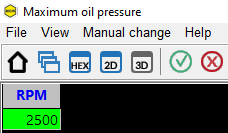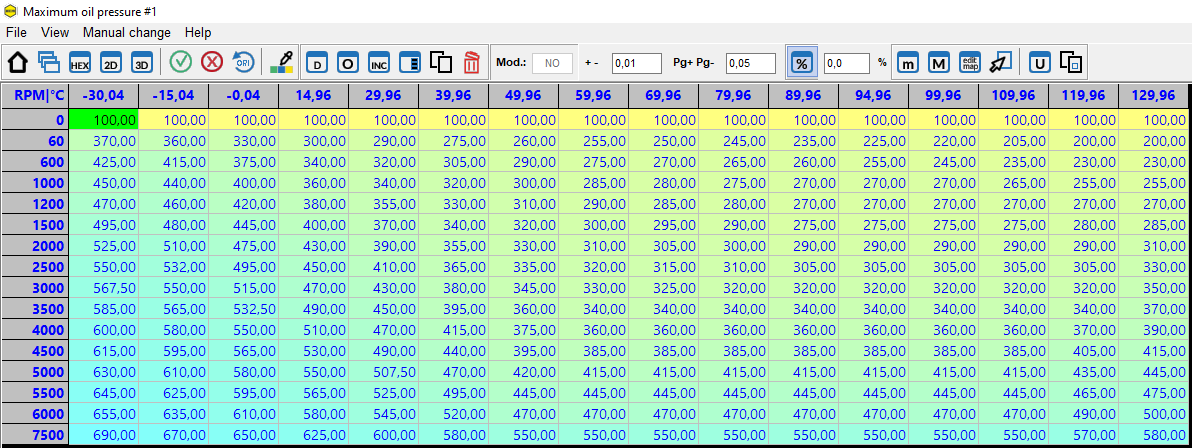ECM Titanium Tuning Tips
When working on vehicles with heavy tuning or under severe use, it’s essential to ensure proper engine lubrication under all conditions. A critical yet often underestimated parameter is oil pressure at idle, which—especially when hot—can drop below safety thresholds.
ECM Titanium allows you to optimize this parameter by acting directly on the ECU files to increase oil pressure through two different strategies.
Several ECM Titanium drivers allow access to the maps needed to increase oil pressure on various applications and ECUs, in two main ways depending on the type of oil pump installed.
Depending on the technology applied to the different engines, intervention is made on the following parameters:
In vehicles with fixed-displacement pumps, pressure can be increased by adjusting the idle speed maps. OEM values, often kept low to reduce emissions, generate pressure values below 1 bar when hot. Setting an idle between 900 and 1000 RPM ensures more stable pressure, improving overall reliability. This modification can be made via maps available in numerous ECM Titanium drivers (Bosch, Continental, Sagem, Delphi, etc.).
In vehicles with variable-displacement pumps, specific maps can be adjusted:
Powergate
Powergate is the new generation of portable control unit programmer for cars and motorcycles, designed to offer every driver a personalized driving experience of their vehicle.
Thanks to a compact design and connection with an intuitive app, Powergate provides a highly customizable and precise vehicle tuning experience.

Intuitive Interface – Simplifies identification and editing of maps even in complex managements.
Complete Database – Access to a wide range of drivers for both recent and legacy vehicles, petrol and diese.
Operational precision – Enables targeted modifications of every oil or idle management parameter.
Operational versatility – Supports all file types and managements, applicable to a wide range of vehicles.
Business expansion – Repeatable and scalable interventions, ideal to stand out in the professional tuning market.
Oil pressure management on Audi A6 3.0 TDI:
Thanks to the maps in the driver for the Bosch EDC17CP44 ECU, equipped on the Audi A6 3.0 TDI, it’s possible to anticipate the solenoid activation of the variable-displacement pump to increase oil pressure already at low RPMs.
Modifying the RPM threshold that activates the solenoid allows anticipation of the switch to high-pressure mode. By lowering the value (e.g. from 1800 to 1200 RPM), lubrication is improved even at low engine speed.

Oil pressure on Audi RS6 Avant 4.0 V8 TFSI:

Again, the maps in the driver for the Bosch MG1CS008 ECU, equipped on Audi RS6 Avant 4.0 TFSI, allow precise calibration of oil pressure according to engine RPM and temperature, fully utilizing the electronic control logic of the pump.
To modify this map, target values are adjusted based on RPM and oil temperature. This allows you to create pressure curves suitable for any condition: from urban traffic to sporty driving.

Oil pressure on BMW G10 540d:
Even on some diesel engines (which share the same technology), it’s possible to work on the maps in the driver to modify electronic oil pump management and adjust pressure based on engine RPM and temperature, adapting it to real-world usage. In this case, the reference driver is for the Bosch MD1CP002 ECU equipped on the BMW G10 540d.
As already seen, the targets are calibrated under multiple operating conditions. This strategy optimizes protection, performance, and consumption even on modern diesels.

Idle management on Renault Clio 2 RS PH1:

The last example refers to an older application: the Siemens Sirius 32 ECU, equipped on the Renault Clio 2 RS Phase 1. Thanks to the maps available in the driver, it’s possible to increase idle speed to achieve more stable oil pressure, especially with a hot engine.
You just need to adapt idle values when the engine is hot by setting a higher idle (e.g. 950 RPM), thus improving pressure during deceleration and stop phases and reducing component wear.

With targeted management and the support of ECM Titanium, you can:
Do you want to improve even more in what you do?
Take a look at our training programs worldwide. Invest in your skills and increase your earning potential. A specialist will be with you every step of the way, so you can start working confidently right away!

The power of information will be in your hands, and with ECM Titanium, you can make the most of it: contact us today for more information.
